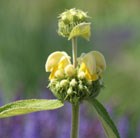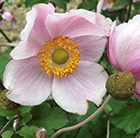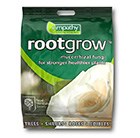New products at Crocus
by Sarah - May 30th, 2009.Filed under: Crocus, New Products.
New products today at Crocus

Japanese skimmia (female) £14.99
Position: partial to full shadeSoil: moderately fertile, moist but well-drained soilRate of growth: averageFlowering period: April to May Flower colour: whiteOther features: the flowers are followed by bright red berries as long as a male variety is planted close byHardiness: fully hardyA spreading, evergreen shrub with white flowers in April and May and slightly aromatic, lance-shaped, dark green leaves. This award-winning shrub provides much-needed colour in the winter garden. Ideal for a shady shrub or mixed border, the flowers are followed by long lasting, bright red berries as long as a male variety is planted close by.Garden care: Lightly trim after flowering, if necessary. Add plenty of well-rotted compost when planting as may become chlorotic if planted on poor, dry soils.Goes well with: Buxus sempervirens (box pyramid), Hedera hibernica 'Sagittifolia', Ligustrum delavayanum 'Cone', Laurus nobilis (bay standard), Sarcococca confusa, Skimmia japonica 'Fragrans'.

phlomis £5.99
Position: full sun Soil: any fertile, well-drained soilRate of growth: average-fast Flowering period: May to SeptemberHardiness: fullyhardyFrom late spring, right through to early autumn, whorls of hooded, pale yellow flowers appear at intervals on tall, erect stems with dramatic, heart-shaped leaves. A vigorous, spreading perennial that's justifiably popular, due to its long flowering season and tolerance of drought. It looks great in a mixed border, but it needs room to express itself. The flowers are also worth leaving on in winter as they look magical when covered in frost.Garden care: In mid-spring shorten any frost-damaged stems, cutting back to just above a healthy bud. Remove any weak or diseased shoots, cutting cleanly back to the base.

Japanese anemone £5.99
Position: full sun or partial shadeSoil: moist, fertile, humus-rich soilRate of growth: average Flowering period: July to SeptemberHardiness: fully hardyA fabulous plant for bringing colour to the garden in late summer and autumn, this anemone has masses of large, rosy pink, cup shaped flowers on tall, wiry stems from July to September. One of the most reliable and free-flowering of the Japanese anemones, these have distinctive purple-tinted stems and outerpetals, which contrast beautifully with the pale pink inner petals. The leaves are pretty, too   vine-like, dark green, and semi-evergreen. They are perfect for areas of partial shade towards the back of a moist herbaceous or mixed border.Garden care: Cut back the stalks after the flowers have faded. Tidy up old dead leaves in March. Apply a generous 5-7cm mulch of well-rotted garden compost or manure around the base of the plant in spring. Avoid moving the plant since it resents disturbance. Where necessary lift and divide congested clumps in early spring.

thyme £3.99
Position: full sunSoil: well-drained neutral to alkaline soilRate of growth: average to fast Flowering period: June to July Flower colour: clear pinkOther features: highly attractive to bees and other beneficial pollinating insectsHardiness: fully hardyThis mat-forming thyme produces a mass of clear pink flowers in summer. It's an ideal ground cover plant for a sunny border or rock garden. Useful for attracting bees and other beneficial pollinating insects into the garden, the aromatic grey-green leaves release a lovely scent whenever they are trodden on.Garden care: After flowering cut back hard using garden shears to retain a neat compact shape. Lift and divide large clumps in early spring.

rose-rootgrow £2.99
Specific Benefits to roses Over the last few years the benefits of treating roses with rootgrow at planting time has been well documented. Using rootgrow with roses will not just help them to establish well and produce a good show of flowers but it will also also enable gardeners to grow roses in soil that has previously had roses growing in it. Now established throughout the UK as a standard treatment for roses rootgrow has reported to be successful in combating the problem of rose replant disease or rose soil sickness.How do mycorrhizal fungi benefit plants?In its simplest sense mycorrhizal fungi do everything plants roots do just better. When new plants are planted with rootgrow it takes only 2-4 weeks under normal conditions for these fungi to start benefiting plants. In that time they attach themselves to the plant's root system and grow out rapidly into the soil, searching for nutrients and water. They essentially become part of the plant's own root system. The benefits to plants are; Better nutrient uptake These fungi are so much thinner and finer than the plant's plant's own roots they can therefore find nutrients in the soil far more efficiently that the plant's own course roots. They are especially good at finding nutrients responsible for flowering and fruiting such as Phosphorous and Potassium. As they can explore a much greater amount of soil than the plant's own roots they are also far more likely Drought toleranceMycorrhizal fungi are an essential part of a plants ability to combat drought. Leaves and stems have developed mechanisms to combat drought such as silver leaves, waxy leaves and hairy leaves but these adaptations on their own aren't enough if the plant doesn't have its friendly fungal partner on its roots. Mycorrhizal fungi hold onto water in soils like a sponge. Establishment in difficult soils Mycorrhizal fungi will enable plants to establish and and thrive even in difficult soils. In poor sandy soils the mycorrhizal fungi will be able to find scarce nutrients and hold onto water In clay soils these fungi will be able to unlock nutrients nutrients from the soil acting like a clay breaker.






